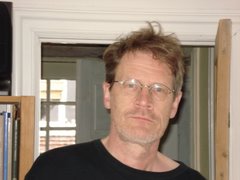As the number of biographies has grown over the centuries, so has the number of famous people whose lives have been subjected to several or many renditions; some popular historical figures have in fact occasioned more than a hundred biographies (an anonymous blogger recently proclaimed that she had nearly one hundred Marilyn Monroe biographies on her shelves “and I never get bored reading them”). Thus the emergence of a supergenre, the “metabiography,” which does not restrict itself to writing yet another and infinitesimally “truer” version of a life (perhaps based on a newly discovered letter or diary) but primarily analyzes earlier versions to make a critical appraisal of the tradition of life-writing about a particular subject. An excellent recent example is Lucasta Miller’s The Brontë Myth (2004) which is not so much a biography of the Brontës as a book about biography where the author demonstrates how generations of literary historians and life-writers have remolded the Brontë sisters to fit their own agendas.
Scientists have had their metabiographers too. More than fifty years ago, Henry Guerlac (1954) set the example with an essay on Lavoisier and his biographers. He was followed by Dorinda Outram (1976) on the tradition for Cuvier-éloges; David Cassidy (1979) on biographies of Einstein; Marilyn Marshall (1980) on Fechner-studies; Steven Jacyna (1983) on the succession of nineteenth-century images of John Hunter; Frederick Churchill (1982) and Marjorie Greene (1993) on the Darwin-biographical tradtion; and L. Pearce Williams (1991) on Faraday-biographies. The first scientific metabiography in monograph form was probably A. Rupert Hall’s study on eighteenth-century biographies of Newton (1999). The entries on individual scientists in the Reader’s Guide to the History of Science (ed., Arne Hessenbruch, 2000) follows the same pattern — it is not primarily the details of the life and work of the scientist but the changing interpretations by different biographers that is in focus.
Although Nicolaas Rupke was apparently not aware of this emerging metabiographical literature when completing his study of the Humboldt phenomenon in Germany (Alexander von Humboldt: A Metabiography. Frankfurt: Peter Lang AG, 2005) his book fits nicely into the tradition. Alexander von Humboldt (1769-1859) is a good choice for a metabiographer. A celebrated naturalist, scientific traveller-explorer, physical geographer, and intellectual, indeed one the best known figures in the history of German science and learning, he has been the subject of a huge publication industry. Fellow scientists, science popularizers, journalists, and to some extent historians, have contributed to the facets of the many Humboldt portraits.
“Who did the many writers about Humboldt think he really was?” (p. 17), asks Rupke and answers the question by identifying a number of political camps in modern German history that have appropriated Humboldt over more than 150 years and “aggressively recreated” his life and work “to suit contemporary needs” (p. 208). There is Humboldt the national hero of the revolutionaries of 1848; the subversive democrat at the Prussian court; the culture chauvinist of the Weimar republic; and the Aryan supremacist of the Nazi period. Postwar Humboldts include the antislavery marxist of the East Germans; the cosmopolitan friend of the Jews; and today’s pioneer of globalization (there is, of course, even a “green” and a gay Humboldt). Each of these get a separate chapter in Rupke’s well-researched (the list of printed sources is 75 pages long), densely written and fact-heavy study. The only significant political institutions in Germany that have not been involved in the cultural construction of their own Humboldt are the Lutheran and Catholic churches.
Rupke concludes that a study of the Humboldt phenomenon is attractive as a means for understanding changing modern German identities. Humboldt’s life and work was an “agora” that shaped a discourse not only about the natural world, but as much about his own nation, enabling Germans to deal with “national ambitions, shortcomings, guilt complexes and the like” (p. 206). He also concludes that all the Humboldts — whether good or bad, scholarly or popular — are the product of institutional cultures. The task of metabiography, in Rupke’s view, thus is primarily to explore the ideological embeddedness of biographies, not to settles issues of their authenticity.
Despite a concluding section on metabiographical reflections and “an inevitable moment of self-reflection” (p. 217), Rupke never really becomes self-reflexive, however. He reprimands biographers who thought they were only describing the facts of Humboldt’s life; yet he basically treats the political and ideological circumstances around the successive Humboldt constructions in an similar down-to-earth factual manner. And he does not seem to realize that the phrase “In historiography there does not exist an Archimedean point” (p. 217) is as strongly ideologically embedded in contemporary Western culture as the Humboldt-authors whose writings he has so skilfully analyzed. This is a minor point, however. In general, Rupke’s study is a clear improvement of the earlier scientific metabiographical tradition from Henry Guerlac to A. Rupert Hall. It is well-written, (albeit not elegantly) and will doubtlessly become a standard reference for the Humboldt industry and for writers of scientific metabiographies to come.
Subscribe to:
Post Comments (Atom)

No comments:
Post a Comment